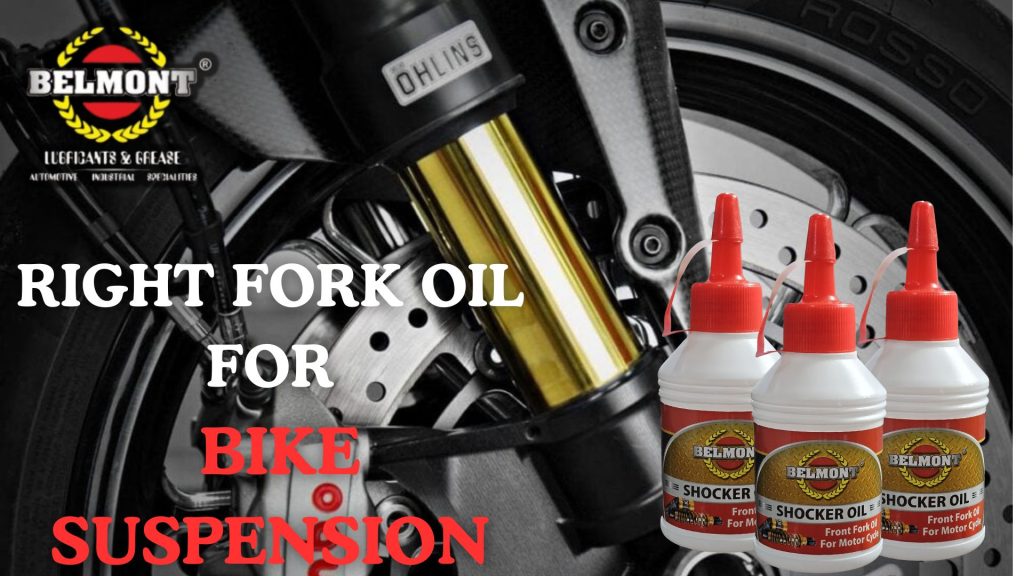
Motorcycle suspension is one of the most overlooked yet crucial aspects of riding comfort and safety. While most riders regularly change engine oil and brake fluid, very few pay attention to fork oil. The front suspension forks of your bike play a vital role in absorbing road shocks, maintaining grip, and giving you confidence on corners. The hidden hero behind all this performance is the fork oil viscosity for bike suspension, which directly impacts smoothness, control, and overall ride quality.
In this detailed guide, we’ll explain how to choose the right fork oil viscosity for smooth bike suspension, why viscosity matters, and how different grades like 10W, 15W, or 20W affect your motorcycle’s handling.
What Is Fork Oil and Why Is It Important?
Fork oil is a specially designed fluid that lubricates and dampens the movement of your motorcycle’s front suspension. Unlike engine oil, which protects moving parts from wear, fork oil controls:
- Damping – how fast or slow your forks compress and rebound.
- Lubrication – reducing friction between internal suspension components.
- Heat dissipation – preventing performance loss under hard riding.
If you pick the wrong viscosity, your suspension can feel too soft and bouncy or too stiff and harsh, affecting ride quality and even safety.
Understanding Fork Oil Viscosity
Viscosity simply means the thickness of the oil. Just like engine oils (10W30, 15W40, etc.), fork oils also come in grades such as 5W, 10W, 15W, and 20W.
- Lower viscosity (e.g., 5W or 10W) → thinner oil → smoother flow inside forks → softer suspension response.
- Higher viscosity (e.g., 15W or 20W) → thicker oil → slower flow inside forks → stiffer suspension response.
Your bike’s handling balance depends on selecting the right fork oil viscosity for your weight, riding style, and road conditions.
How to Choose the Right Fork Oil Viscosity for Smooth Bike Suspension
Here are the main factors that help you select the correct viscosity grade:
1. Manufacturer Recommendation
Always check your motorcycle’s service manual. Most bikes like commuter motorcycles (Splendor, Pulsar, Apache) usually recommend 10W fork oil, while performance bikes (KTM Duke, Yamaha R15, Royal Enfield) may require 15W or higher.
2. Rider Weight
- Lighter riders (50–65 kg) → softer viscosity (10W).
- Heavier riders (70–90+ kg) → slightly thicker viscosity (15W or 20W) for stability.
3. Road Conditions
- City/Highway riding: A balanced 10W or 15W works well.
- Off-road / bad roads: Slightly thicker oil (15W–20W) for better control.
- Racing/Track use: Riders often fine-tune between 7.5W and 15W depending on performance needs.
4. Riding Style
- Comfort-focused riders → choose thinner oil (10W).
- Aggressive riders / cornering enthusiasts → thicker oil (15W–20W) provides better damping.
5. Climate Conditions
- Hot climate (India’s summers): Oil thins out, so a slightly higher grade like 15W is better.
- Cold climate: Thinner oils like 10W prevent sluggish fork action.
Fork Oil Viscosity Chart for Reference
| Fork Oil Grade | Suspension Feel | Best For |
|---|---|---|
| 5W | Very soft, plush | Lightweight bikes, comfort rides |
| 10W | Balanced, smooth | Daily commuting, city rides |
| 15W | Medium stiff | Sport riding, heavier riders |
| 20W | Stiff, controlled | Off-road, performance motorcycles |
Signs You Are Using the Wrong Fork Oil Viscosity
- Excessive diving while braking → Oil too thin.
- Harsh ride, no absorption on bumps → Oil too thick.
- Poor cornering stability → Incorrect viscosity.
- Fork seal leakage → Overfilled or wrong oil grade.
If you experience these issues, it’s time to reconsider your fork oil choice.
Belmont Lubricants – High-Quality Oils for Your Motorcycle
Choosing the right fork oil is important, but so is selecting a trusted brand. At Belmont Lubricants, we manufacture premium motorcycle oils, greases, and lubricants designed for Indian road conditions. Our focus on consistency and performance ensures your bike suspension and engine stay smooth for longer.
Also visit www.belmont.in to explore our complete range of automotive and industrial lubricants.
For related reading, check out:
- Can I Use 15W40 Instead of 10W30 in Diesel Engines?
- Which is Better 10W30 or 10W40 Engine Oil for Motorcycles? A Complete Guide
FAQs on Choosing Fork Oil Viscosity
Q1. How often should fork oil be changed?
Most manufacturers recommend replacing fork oil every 15,000–20,000 km or every 2 years, whichever comes first.
Q2. Can I use engine oil instead of fork oil in bike suspension?
No. Engine oils like 10W30 or 15W40 are designed for combustion engines, not suspension damping. Fork oil has specific anti-foaming and viscosity stability properties.
Q3. Is 10W fork oil better than 15W?
Not necessarily. A 10W fork oil generally provides smoother performance for city commuting and lighter riders, while a 15W fork oil delivers firmer damping and better stability for heavier riders or those with a more aggressive riding style. The ideal choice depends on your body weight, road conditions, and how you ride your motorcycle.
Q4. What happens if fork oil is too thin?
The suspension becomes too soft, causing nose-diving during braking and instability at high speeds.
Q5. Can I mix different fork oil viscosities?
Technically yes, but it’s not recommended. Always stick to a single recommended grade for consistency.
Final Thoughts
Knowing how to choose the right fork oil viscosity for smooth bike suspension can transform your motorcycle’s ride quality. Whether you commute daily, tour on highways, or enjoy sporty rides, the correct fork oil ensures comfort, stability, and safety.
For the best performance, always use quality lubricants from trusted brands like Belmont Lubricants. Explore our wide range of engine oils, greases, and specialty fluids designed for Indian bikes.
By following this guide and selecting the right fork oil viscosity, you’ll enjoy a smoother, safer, and more controlled ride every time.
